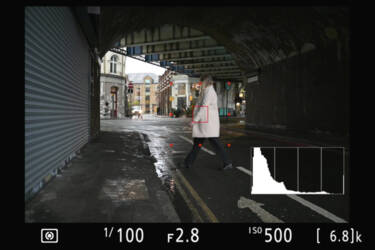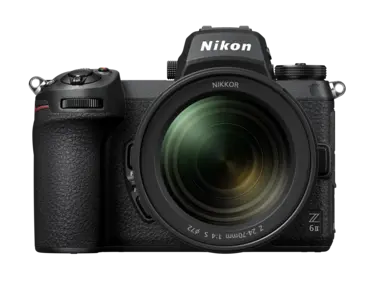Camera metering modes explained

Learn metering to fine-tune exposure
Lighting conditions change constantly when you’re photographing outdoors or on location. Choosing the right metering mode will help you get better exposure so you have less work to do later.
What are camera metering modes?
Metering modes, also called exposure metering, tell your camera how to determine the brightness of your image.
At first, you’ll probably stick with matrix metering, the camera’s default. But you can expand beyond that to dial in even more accurate exposure depending on your conditions and subject.
There are four types of exposure metering in Nikon cameras:
- Matrix metering
- Centre-weighted metering
- Spot metering
- Highlight-weighted metering
Matrix metering
The easiest mode to use, matrix metering (above) takes the average of a wide area of the frame to figure out what the image exposure should be. This mode, also called evaluative metering, is good for everyday photography in multiple situations. It’s basically the ‘auto’ setting of metering exposure. While matrix metering will serve you well most of the time, there are instances where you’ll want more control. Matrix metering is best if you’re working in even lighting or using flash.
Centre-weighted metering
This mode still looks at a large area of the frame but gives priority to what’s in the centre of the scene. Your camera will balance the image’s exposure based on the tones in the middle of your photo, ensuring a more accurate exposure of that area. That makes it ideal for when you know your subject will be in the centre of the frame, for example, portraits or musicians on stage.
Spot metering
This super-precise metering mode only looks at the area where your focus point is placed to determine exposure. Spot metering is perfect for scenes with high contrast that may throw off your image, such as a dark house on a snowy hillside. Nikon cameras focus on a circle equal to about 2.5% of the frame in spot metering mode, as you can see in the video above.
Highlight-weighted metering
This mode gives preference to the highlights in your image when determining exposure so they won’t be blown out. It’s well-suited to bright environments or situations where you need to pay particular attention to the brightest part of your photo, for example, someone spotlit on a stage.
Highlight-weighted metering is specific to Nikon cameras and uses the same data as matrix metering. But instead of balancing the exposure across the whole frame, it calculates an exposure that saves the details in your highlights. Remember that this will make your shadows darker.
How to choose a metering mode
You can select a metering mode via the still photography ‘i’ menu. Press the ‘i’ button on the back of your camera while in still image mode, then select the icon on the bottom bar that looks like a box with a target in it to access the metering menu. You’ll see four different icons representing the four metering modes. Select one using the touchscreen or the ‘OK’ button and you’re good to go.
Learn your camera’s limits
Metering modes are important to learn but do have their limits. A largely white or largely black scene can trick your camera’s sensor into overcompensating, making the image too bright or too dark. Part of your job as a photographer is knowing what to do when that happens, whether that means adjusting your settings manually or using exposure compensation.
More in Camera 101s
Get started here

Unlock greater creativity








